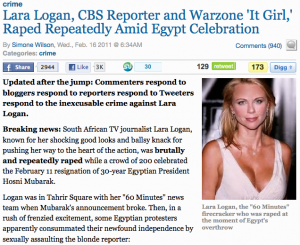 Recently Hal Espen, formerly the editor of Outside magazine, posted an error report on MediaBugs concerning a 2009 column by Thomas Friedman on the politics of climate change. Friedman’s apparent mistake was reporting that the first President Bush had signed the Rio Treaty in 1993 — part of an argument Friedman was promoting that, historically speaking, “Republicans can claim as much credit for America’s environmental leadership as Democrats.”
Recently Hal Espen, formerly the editor of Outside magazine, posted an error report on MediaBugs concerning a 2009 column by Thomas Friedman on the politics of climate change. Friedman’s apparent mistake was reporting that the first President Bush had signed the Rio Treaty in 1993 — part of an argument Friedman was promoting that, historically speaking, “Republicans can claim as much credit for America’s environmental leadership as Democrats.”
Espen noted that he had written to the Times about the error several times but never got a response. We followed up and arrived at a somewhat baffling result: Friedman himself says he agrees the column should be corrected. The Times says it does not intend to fix it. The error will continue to sit in its digital archive, untouched. Here’s how the situation unfolded:
Over the course of a week in mid August we corresponded by email about the bug report with two editors at the Times as well as with Friedman. Complicating matters was the fact that Friedman’s role as an op-ed columnist means that his work is handled by entirely different editorial managers from the rest of the Times’ news operation.
We corresponded both with news and editorial managers. Essentially, they told us that this error is too old to fix. In the past, we’ve heard from Times news editors that there is no bright line dividing recent, correctable errors and those that are too old to correct. The editorial side’s representative was more comfortable setting the cutoff for corrections at more or less one year, but added that it’s not a hard and fast policy and older errors can be considered on a case-by-case basis.
The editors declined to be quoted publicly about the situation and instead referred us to the Times’ communications department for an official statement. (We inquired there, too, and later received a one-sentence explanation.)
We inquired with Friedman about it as well. He emailed: “A quick Google tells me you are correct, in which case the column in the digital archive should be corrected. Thanks for pointing it out.”
But in a follow-up email he said: “I checked on this and was told that the newsroom has a rule that we don’t go back in time to correct minor errors in the archive. They draw a line at one year.”
This, of course, raises the question whether this error should be considered “minor.” If President Bush didn’t sign the Rio Treaty in 1993, Friedman’s argument in the column that Republicans used to be more friendly to the environmental cause is significantly weakened.
The Times’ lack of clarity with its approach to archival corrections is something Scott Rosenberg and I examined thoroughly in July, in our in-depth article published in The Atlantic, “The Case of the New York Times Terror Error.” That case involved a nine-year-old error sitting in the Times archive — ostensibly a minor one, until it blew up into a major one this spring. (And despite its age, the Times did end up issuing a correction for it.)
The Times’ consistency problem here is obvious. Espen highlighted it succinctly in his own comments about the outcome of the Friedman bug report:
As a former editor, I sympathize with the need to draw the line somewhere and with a reluctance to devote diminishing resources to burrowing backward into the news-cycle equivalent of ancient history. But as a fervent reader, admirer, and occasional contributor to the Times, this one-year rule sticks in my craw as a certifiable Catch-22: after all, my attempt to alert the Times to the mistake within the first year of publication disappeared into a black hole, yet now that the error has at last been acknowledged, it’s too late.
We, too, appreciate the formidable challenge the Times faces if it commits to correcting substantive errors in its archive. But as we explained in detail in our Atlantic piece, this is not only a plausible goal in the digital age, it’s also a necessary one.
 Report an error
Report an error









